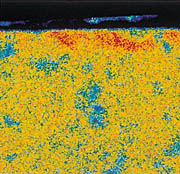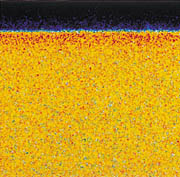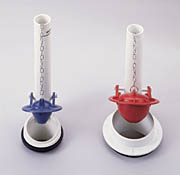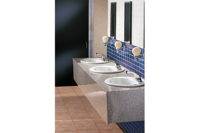Editor's Note: This is a new column in which PME invites manufacturers to discuss modern plumbing technology.
I've worked in the plumbing industry for over eight years--first in an independent testing lab, and now on the manufacturing side at TOTO USA as the engineering manager. It has given me the opportunity to see firsthand the evolution of plumbing fixture design from both sides of the testing protocol, and the level of innovation that is possible. What is the state of the industry? What is the latest technology that is being applied to the design and engineering of bathroom fixtures? Those were some of the questions PM Engineer asked me to address from my perspective.
Low-Flow Toilets
If you look back far enough in history, you'll find early toilets that used up to seven gallons per flush (gpf). As the "modern convenience" grew more prevalent, the tank size dropped to around five gallons. The standard flush volume finally fell to around 3.5 gpf by the middle of the last century, but when the National Energy Efficiency Act of 1992 mandated toilets that flushed with just 1.6 gallons of water, a lot of toilet manufacturers were caught off-guard. If you just scaled back the water volume of the then-standard design, the toilet simply didn't work. Obviously, the industry needed a whole new approach.Our company had the advantage of a parent company in Japan, where they had been working on low-flow, gravity-flush toilets for decades, and we've continued that research.
Our research has developed a gravity flushing system that compares to a functional pressure-assist flush in reliability, but is no louder than the old 3.5-gpf, gravity-flush models. The proprietary system is called G-Max. G-Max is essentially a gravity-powered system, but gains a little boost from an overfilled tank and some trapway design features based on carefully tested fluid dynamics principles.

G-Max Toilets
The tank on a G-Max toilet holds a lot more than 1.6 gallons. Depending on the specific toilet model using the system, there are approximately three gallons waiting for each flush, but only about 1.3 gallons go through the flush valve before the flow is cut off. (The final .3 gallons trickle through the fill tube to re-fill the bowl after the flush cycle is complete.) The head pressure of all that extra water pushing down gives the flush water more velocity as it moves through the system. The flush valve itself is also unique--it's three inches in diameter, while most toilet manufacturers still use two-inch-diameter valves to let water out of the tank. The larger valve lets the water move out of the tank faster, adding even more speed.As in typical toilet design, the flow from the tank is directed into two separate channels--one that leads to the rim holes where the water first washes and then helps re-fill the bowl, and the other to the jet at the bottom of the bowl where it sets up the siphon action that carries the bowl water and waste up over the trap and down into the building's sewage system. Traditional design used a small jet opening to increase the speed of the water shooting out, but we found that a large jet opening that maintains the high flow rate is more efficient.
That water shoots across the bottom of the bowl, into the trapway, and over the top of the glazed trap, creating a strong siphon that pulls everything out of the bowl. We tested numerous styles of trapway designs, varying the trap diameter and slope, jet dimensions, and outlet radii, to name a few, to achieve the optimum siphon power. Computer modeling analyzed the fluid dynamics using multiple flow sensors in the trapway. This allowed us to minimize the turbulence and air in the trapway, while maximizing the siphon power. The diameter of the trapway is 2 1/8 inches, which we found was the maximum functional size. If the pipe is any bigger, the suction breaks too early, and the siphon action fails to clear the bowl.
The final design innovation in the trapway occurs just before it takes its last turn and empties into the waste pipe below the floor. A lip at the end creates a shallow pool a few inches long on the bottom of the trapway that always holds some water from the previous flush/refill cycle. Although the trapway is still 2 1/8 inches in diameter, the effective clearance at that point is slightly diminished, making it ideal for generating a siphon. When the flush water approaches this section, it is squeezed into the slightly smaller space, which in turn increases its velocity. And because it is just water that reduces the clearance, there is no real obstruction if any solids need to pass through that space. The physics are complicated, but the result is increased flow and suction of the smaller pipe without sacrificing the greater clearance of the bigger one.
Another advantage to the G-Max system is that the components are all familiar. There's a flapper and a float, a handle and a pull chain, and you can fix or replace anything that needs fixing or replacing, without waiting for special parts to arrive via UPS.

SanaGloss
One more innovative feature now available as an option on all our toilets is a glazing treatment called SanaGloss. The object of the treatment is to make the interior surface of the toilet bowl so smooth on the microscopic level that nothing can stick to it. This means a cleaner bowl all the time and less maintenance in the long run.The mirror-like smoothness of the glaze forces any water touching it to spread out in a very thin layer. The advantages of this surface are twofold--one physical, and one chemical.
On the physical side, the SanaGloss surface is so slick that waste can't stick to it, so the bowl gets washed clean with every flush. This feature can save a large facility a lot of money and saved time in reduced maintenance. Chemically, the glaze produces an ion barrier on the surface of the bowl that protects it from hard-water stains. This reduces scrubbing, which prolongs the life of the glaze. SanaGloss glazing also will soon be available on our line of sinks.

Automatic Flush Valves on Urinals
The same legislation that required 1.6 gpf toilets also mandated that urinals use just one gallon of water per flush. This is easier to achieve because there are no solid wastes involved, but we thought we could do even better. We designed an automatic flush valve that results in a 30% water savings over a standard one gpf system.Early automatic flush valves were designed around a fairly simple logic--if a person stood in front of the unit for more than a few seconds, it would trigger a full one-gallon flush when he walked away. It did this for each user, whether there was just one per hour, or a line of 50 men waiting to take their turns.
We designed a fuzzy logic circuit into our new automatic flush valve. While the phrase "fuzzy logic" has been much abused and misused in recent years, I use it here in the appropriate sense. The valve's infrared sensor recognizes not just whether or not someone is using the urinal, but also how long he stays and how long it's been since the last user left. Using these variables, the logic unit decides how much water to release after each user steps away, ranging from a 50 percent partial flush to a full one-gallon flush.
For instance, if there is a line of men waiting to use the urinal, such as during break time in a factory or when a movie ends at a theater, the unit recognizes the situation and conserves water with partial flushes for the first five users and provides a full flush for every sixth man in line. Likewise, a single user after a long lull, such as late at night, triggers a full flush because the logic unit expects another lull and wants to be sure the waste is all cleared from the fixture. Chart 1 shows other use situations, and the logic unit's response.
Through technological advances such as these, TOTO has attempted to make the ever increasing demands for stricter water conservation efforts more successful.
